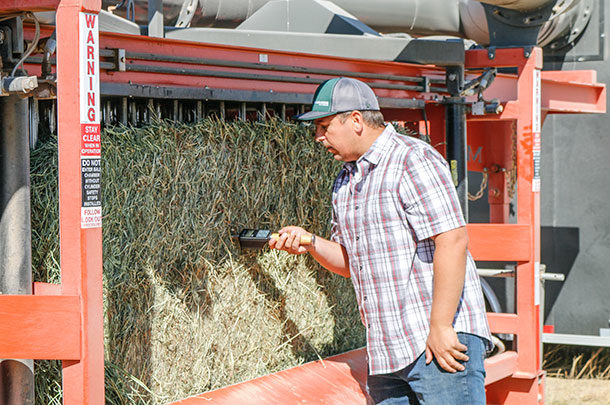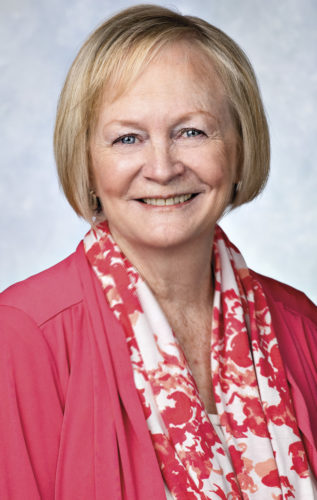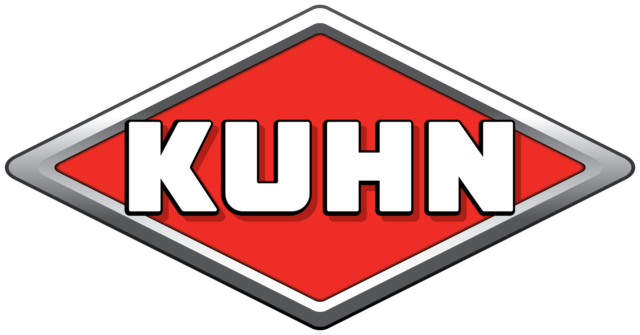- What were some of your biggest challenges this year?
- What do you hope to do differently next year?
- On a scale of one to 10 (10 being the best ever), how would you rate this season?
There were a few surprises. Read what producers around the country had to say.
Richard Heard
Jasper, Georgia
I would rate this year as a “six” with my grass hay – round and small squares. My biggest challenge was weather; we had an unusually wet summer this year. It was hard to put together enough dry bales to bale. Next year I hope to add more wagons for square bales. I’d like to have enough to load a day’s worth of baling, back in the barn and not have to unload until the next morning.
Erik Gormley
Burlington, Wyoming
What a tough hay year for quality – thunderstorms all summer with small amounts. August was the worst in history, and 80 percent of our quality hay is put up in August, but it was cold and rainy all month.
For next year, I’m going to cut a couple weeks earlier to set us up better for second cutting. I’m going to say this has been the worst year out of the last 18 years for quality hay; I’m going to give it a “three.” (“One” would be a total loss, in my opinion.)
However, last year was the all-time best year we ever had. It's all about weather and perfect timing and luck!
Shelia and Jeff Furlong
Glasgow, Kentucky
Without a doubt, the weather presented challenges; 2018’s weather started mild with a cold snap early in the growing season that reduced first cutting yields – apparently widespread in our area. Our first cut yields (and other farmers are saying the same thing) showed 30 to 50 percent reductions. We’re hearing a lot of farmers concerned about their feed supplies for this winter. We sell all of our hay and should have enough for our regular buyers. We usually we don’t start selling hay until late fall with most sales after the first of the year. Our situation allows us to hold the hay inventory, so that works for our customers and us. This year the phone started ringing in August from newcomers that had heard about our hay. Selling hay that early just doesn’t happen here. We’ve spared a few bales for some of the most desperate ones, but we’re just going to have to say no to any new requests. Second and third cuttings have seemed to be fairly normal yields.
There has been ample moisture that has brought about really troublesome infestations of little foxtail, nutsedge and horsenettle; and we deal with crabgrass, as always.
We don’t anticipate major changes for 2019. We started 2018 with a bit of a drastic plan, but doable for us. Our market for hay will support the cost of reseeding for quality hay; on the surface, it doesn’t sound reasonable but is more profitable than selling lower quality hay. In our area, rolled hay will not cover the cost of production; it’s tough to find enough buyers for lower quality small squares, and large squares are uncommon. Primarily our hay is sold in small squares, with most baled in the field, but our rebaling setup works extremely well.
Newly seeded orchardgrass doesn’t form seedheads, so we can put off first cut a couple of weeks, which gives a bit longer daylight hours, and usually the weather pattern gives some curing windows between rain events. We have a good market for timothy and orchardgrass. Our main timothy buyer wants the seedheads in timothy and is fine with the timothy-orchardgrass mix. When the weeds started showing up, we started spraying, and we’re reseeding timothy-orchardgrass for 2019.
We’re seeing a lot of farmers no-till drilling this fall – some into fairly tall existing stands of grass, but as we drive by, we are doubting good results. Hope we’re wrong.
Shelia calls this year a “four”; Jeff calls it a “five.” 2016 was our “one” year – rain that delayed first cutting so we had a huge yield of junk hay that buyers were glad to get in April of 2018. It was over-mature hay (without a window to get it baled), without rain all season long and weeds that added to the weed seed bank.
Henry Glenn
Jenkinsville, South Carolina
I only received about 3 inches of rain from Tropical Storm Florence. My field is on the Broad River and does flood at times, but will not flood this time since the areas near the head of the river did not receive excessive rain either.
Weather was my biggest challenge this year. Early on in the season, we received rain quite often. Finding a window to cut and bale was difficult. After the third cutting, the rains stopped. I received only 0.4 inch of rain in three weeks, which really hurt the fourth cutting.
As far as making changes for next season, I am very particular in the way I do things now, so I don’t have any plans to change. I may buy a new six-basket tedder to help speed that process. I run a four-basket tedder now. I am a small operation, only 34 acres (about 8,000 bales), but I strive for very clean, well-fertilized, horse-quality coastal bermuda hay.
I would rate my season a “six.” I am going to achieve my average yield this year, but I did lose some to rain. Last year was my best year ever, and I only cut three times. The way the weather worked out this year, I just cut when I had small windows of opportunity. Overall I still think I made the right decision.
Monty Tuinstra
Michigan
We made a lot of quality hay (no rain), but there were periods of two to three weeks of no cut. So weather, as usual, was the biggest challenge. Subscribing to Agrible weather was a huge help in understanding weather patterns and making the "right call."
I might try direct-seeding hay next season. I don't need the nurse crop as feed, and I might save the expense of having a custom harvesting crew put it up.
I would rate this year a “nine.” Our "high-grade gravel" that we farm needs rain and we got it, 9-plus inches year to date. We’ve had very good yields on all crops. If you could not produce crops in our area this year, it might be time to "give it up."
Localized dry spots in Wisconsin have created a waiting list for our hay supply. We’ve never had this "problem" before. Also, our customer base keeps growing in spite of no advertising.
Remember that I'm in the upper peninsula of Michigan. We are far removed from Michigan's lower peninsula – thank God. Purdue is closer than Lansing. Ninety-five percent of our hay goes to northeast and central Wisconsin.
Seth Damisch
Marengo, Illinois
This has been a challenging year, as a whole. We bale about 400 acres of hay a year, 350 acres of row crops and run some cow-calf pairs. We started off the year a little late cutting hay around here. Once we were started, we had very good first cutting yields on almost every field, but had to use preservative as the hay really wouldn't go under 18 percent for the majority of the first cut. Second-cutting yields were lower than average even with all the fertilizer we put on. We had quite a few pounding rains in June; then July, it hardly rained at all. We took off lighter-than-usual cuttings and put heavy nitrogen applications on the third cutting of grass and left it to grow since the middle of August. It looks like very good hay.
On alfalfa-mix hay, we are on four cuttings now, and it has been pretty good as well, if not a bit short on usual tonnage due to uneven weather. Also, which didn't help, we had 10 inches of rain over a weekend in McHenry County that led to a lot of standing rain in fields. We usually don't see those kinds of rains around here. To finish off hay season this year, we have about 250 acres of third and fourth cutting left to do, and will start when the window opens up again weather-wise.
The humidity and extra rain have been probably the biggest challenges we have had this year.
I can't say we would do anything different next year. It may be that I just haven't thought of anything different to do yet since we are still in the full swing of things and I usually contemplate those things over the cold season. Since we do almost all small squares, I would like to build some larger hay trailers for hay-to-barn movement and possibly upgrade to a wheel loader from a track skid steer for picking up bales in the field – basically just improving speed and reliability.
After conferring with my wife, we have decided to give this year a “seven” out of 10. It has definitely been challenging with humidity, odd rainfall patterns and light second cutting. However, the first-cutting yields were tremendous, and the rest of the cuttings have been exceptional and/or look very good from here on out.
Tim Brumme
Killbuck, Ohio
I would say this week is a perfect example of how the 2018 hay season has gone. We mowed hay on Tuesday. The national weather service was calling for three dry, sunny days. By Tuesday night, they added a 20 percent chance of isolated showers for Wednesday morning. We woke up to half an inch of liquid sunshine. We will now wrap this hay instead of making dry hay for the horse market. That has been the way the year has gone.
We sell the majority of our hay into the horse market, and it has been hard to make horse-quality hay this year. June was severely wet. We only baled dry hay four times the whole month, and each time had to beat rain. We used more preservative on first crop than we did all of last year combined. July was more favorable for getting hay dry. The second half of August and first half of September are back to wet and challenging for drying hay.
Yields have been good, but the quality is not where we would like it. We have made some beautiful hay in October the last couple years and are hoping for the trend to continue.
For next year, we will probably wrap a little more hay for our cattle to get us off to a quicker start. I am also considering going from a six-star tedder to a 10-star. Almost all of our hay was tedded twice this year and some up to five times, so I would like more efficiency.
As far as rating this year, it depends on the weather from here on out. I know, I sound like a typical farmer. If we get a couple (or hopefully several) good hay drying windows in the next month, I give it a “five.” If not, I give it a “three.” Either way, I am thankful for what the good Lord has provided! ![]()

-
Lynn Jaynes
- Managing Editor
- Progressive Forage
- Email Lynn Jaynes
PHOTO: Chandler Gulbranson checks the moisture reading on a hay bale in Roberts, Idaho, on Jeff Cook's hay farm. Photo by Lynn Jaynes.










